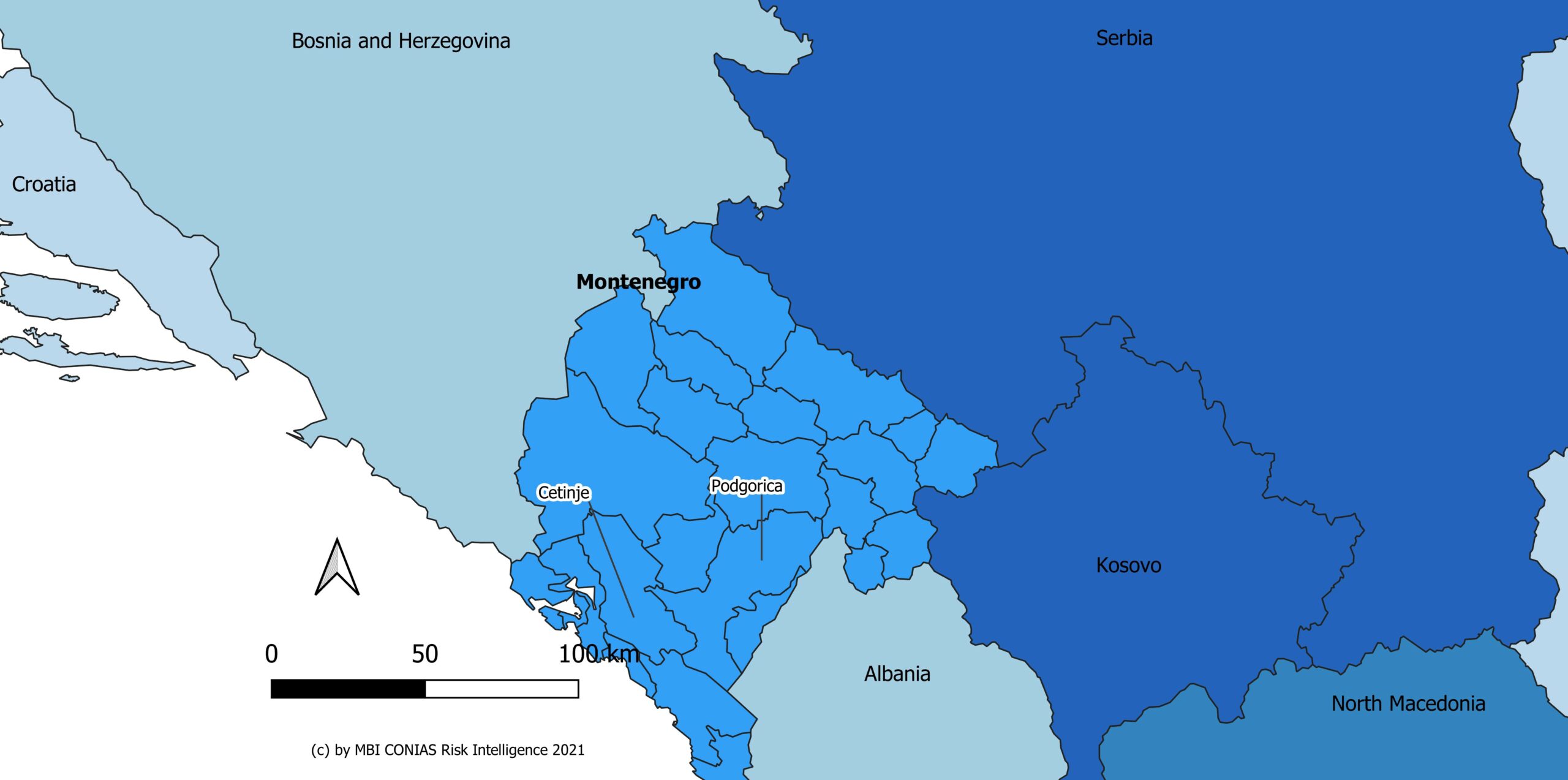
Today, religious conflicts are known, for example, through violent clashes between Christians and Muslims in Nigeria or the efforts of Al-Qaeda and the Islamic State to establish a caliphate. In contrast, so-called church disputes, which can be defined as conflicts between institutions of the same or different denomination or as conflicts between states and confessional communities, are hardly present in public discourse.
Historical background
A particular kind of church dispute is the conflict between the Serbian Orthodox Church in Montenegro and the Montenegrin government over the ownership of church properties in Montenegro, which erupted after Montenegro’s split from the state union with Serbia in 2006. [1] The origin of the conflict can be traced back to the fall of the Kingdom of Montenegro in 1918 and its incorporation into the Kingdom of Serbs, Croats and Slovenes, which later became Yugoslavia. [2] To settle the property disputes, the Montenegrin government passed the Law on Freedom of Religion or Belief and the Legal Status of Religious Communities in 2019, which states that denominational communities must provide proof of ownership for the period prior to 1918, otherwise state property has been illegally appropriated.[3] Since the Montenegrin government is de facto attempting to curb the influence of the Serbian Orthodox Church and supports the aspirations for independence of the Montenegrin Orthodox Church, which was newly founded in 1993, anti-government protests took place across the country from December 2019 to mid-2020, some of which were violent. [4]
Renewed escalation in 2021
Violence resumed on September 5, 2021, when demonstrators tried to block the road to prevent Joanikije II from being introduced as the new head of the Serbian Orthodox Church in Montenegro in Certinje, a city symbolic of Montenegro's independence. The reason for this was that Joanikije II does not recognize this very independence of Montenegro. This led to violent clashes in which 40 civilians and 20 policemen were injured.[5] In addition, critics accused Serbian President Aleksandar Vucic of influencing Joanikije II's election to undermine Montenegro’s independence. [6]
Without an agreement signed between the Serbian Orthodox Church and the Montenegrin government, Montenegro will continue to be of great importance for both churches: For the Serbian Orthodox Church to not lose its influence on former Serbian territory, and for the Montenegrin Orthodox Church to pursuit its goal of becoming an independent and recognized church. Moreover, Montenegro’s treatment of the Serbian minority and the Serbian president’s influence on the Serbian Orthodox Church in Montenegro will be crucial for whether the interstate conflict over the power struggle between Montenegro and Serbia will become violent again in the future.
By analyzing conflicts on regional and subnational level we can identify security risks for your company or planned investments at an early stage and work together to develop strategies to mitigate your risk. We are happy to support you with your individual risk analysis. For more information, please contact us.
The conflict presented highlights that sectarian disputes are not always limited to the spread and practice of religions, but can equally include territorial disputes. At the same time, this conflict emphasizes that the integration of non-violent conflicts into the MBI CONIAS approach proves to be highly relevant, as they have the potential to escalate to a violent conflict at any time.
About the author:
Sarah Pauly
CONIAS Risk Intelligence
Michael Bauer International GmbH
Sources:
[1] https://balkaninsight.com/2015/06/04/serbian-church-demands-property-rights-in-montenegro/ [12.10.2021]
[2] https://balkaninsight.com/2019/06/07/serbian-bishop-accuses-montenegro-of-eying-churchs-property/ [18.10.2021]
[3] https://balkaninsight.com/2019/12/27/montenegrin-parliament-adopts-religion-law-amid-furious-protests/ [19.10.2021]
[4] https://balkaninsight.com/2020/03/12/faces-from-montenegros-church-protests/ [18.10.2021]
[5] https://www.politico.eu/article/montenegro-violent-clashes-church-independence/ [08.10.2021]
[6] https://emerging-europe.com/news/montenegro-is-about-to-inaugurate-a-new-bishop-who-denies-the-countrys-right-to-exist/ [08.10.2021]


